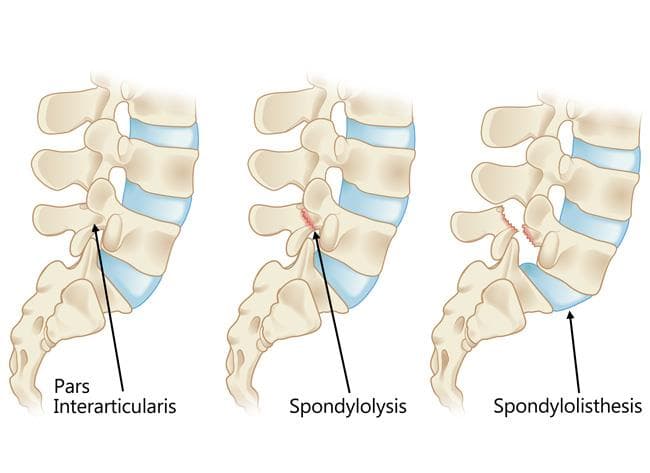Spondylolysis is not typically caused by a single traumatic event, but rather by repetitive stress on the lower spine. This overuse is most common in adolescents who participate in sports that involve frequent hyperextension (bending backward) of the back, such as gymnastics, football, and weightlifting.

Spondylolysis (Pars Fracture)
Spondylolysis is a stress fracture in a specific part of a vertebra called the pars interarticularis, a small segment of bone that links the facet joints connecting the adjoining vertebrae. This condition is a common cause of lower back pain, especially in young athletes.
Causes
Symptoms
Symptoms of spondylolysis can vary, and in many cases, people have the condition without even knowing it. When symptoms do occur, they usually involve a dull, aching lower back pain that can feel like a muscle strain. The pain can worsen with activity, especially with movements that arch the back. I can evolve to muscle spasms or tightness in the back and hamstrings. Sometimes, it will cause pain that radiates down the leg to the foot.
Non-Surgical Treatments
Treatment for spondylolysis is typically non-surgical and focuses on pain management and fracture healing:
- Rest and activity modification: Taking a break from sports or aggravating activities is crucial and may be required for 6 months or more.
- Physical Therapy: Strengthening core and back muscles helps stabilize the spine and reduce stress on the fractured area.
- Medication: Over-the-counter anti-inflammatory drugs (ibuprofen, naproxen) can help relieve pain.
Surgical Treatment
Surgery is rarely needed and is typically reserved for cases where conservative treatments have failed or if the condition has progressed to spondylolisthesis and the vertebra is at risk to continue to slide forward.